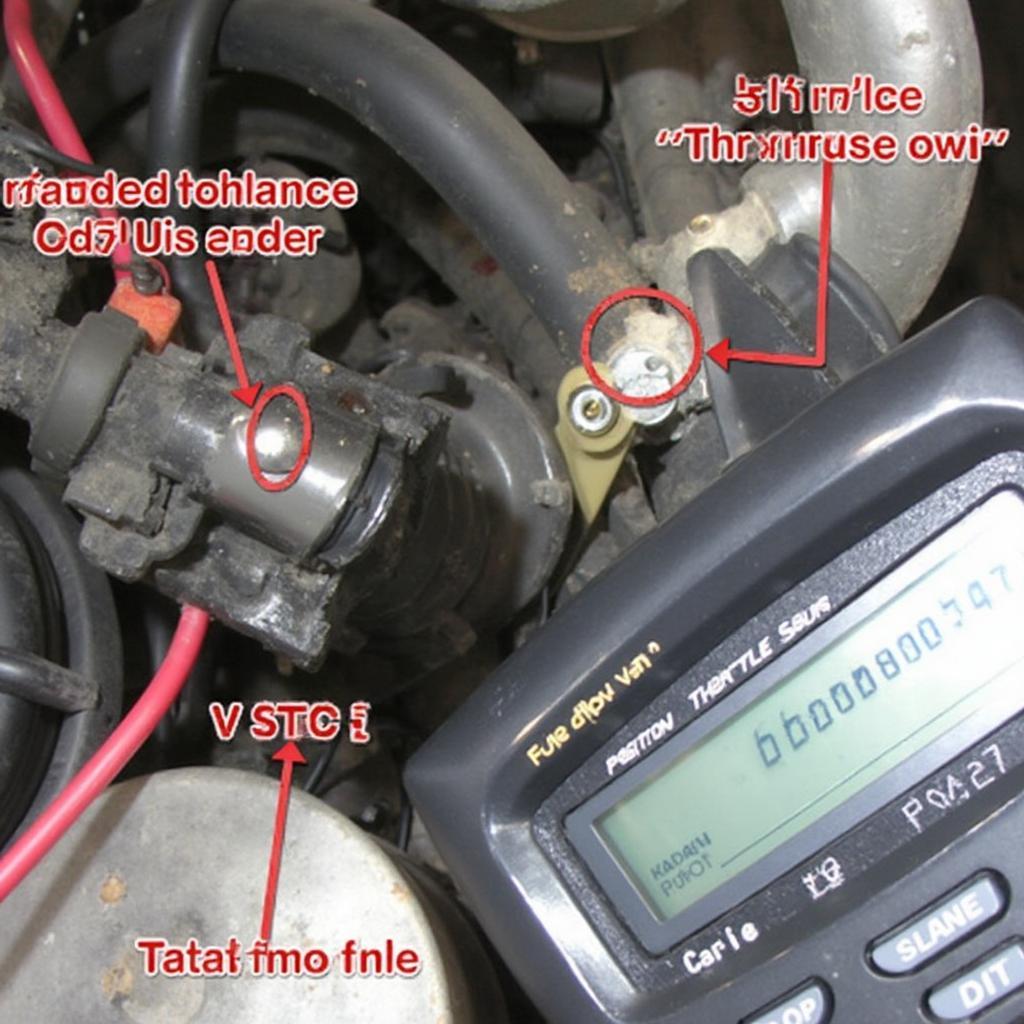The OBD2 code P0227 indicates a problem with the Throttle Position Sensor/Switch ‘B’ circuit, specifically a low input signal. This sensor is crucial for your vehicle’s performance, as it tells the engine control unit (ECU) how much throttle you’re applying. Understanding this code, its causes, symptoms, and diagnostic procedures is essential for any car owner or mechanic.
What Does OBD2 Code P0227 Mean?
The P0227 code signals that the ECU is receiving a voltage signal from the Throttle Position Sensor/Switch ‘B’ circuit that is lower than expected. This can lead to performance issues and even prevent the engine from starting. If you’re seeing this code alongside other throttle-related codes, like P0228 or P0229, it’s even more important to address the issue promptly. This ‘B’ circuit often refers to a specific part of the sensor or its wiring, so accurate diagnosis is crucial.
Causes of OBD2 Code P0227
Several issues can trigger the P0227 code, ranging from simple wiring problems to more complex sensor malfunctions. Here are some of the most common causes:
- Faulty Throttle Position Sensor (TPS): The sensor itself may be worn out or damaged, providing inaccurate readings to the ECU.
- Wiring Problems: Damaged, corroded, or loose wiring in the TPS circuit can disrupt the signal.
- Bad Connector: A loose or damaged connector at the TPS can also cause the low input signal.
- Carbon Buildup: Throttle body contamination can interfere with the TPS operation.
- ECU Issues (Rare): In some cases, a faulty ECU can misinterpret signals, although this is less common.
Symptoms of OBD2 Code P0227
The symptoms of a P0227 code can vary depending on the severity of the problem. You may experience:
- Check Engine Light: The most obvious sign is the illuminated check engine light.
- Reduced Engine Performance: The car may hesitate, surge, or lack power.
- Rough Idle: The engine may idle erratically or stall.
- Limp Mode: In some cases, the ECU may put the vehicle into “limp mode” to protect the engine.
- Increased Fuel Consumption: A malfunctioning TPS can lead to inefficient fuel usage.
Diagnosing OBD2 Code P0227
Diagnosing the P0227 code requires a systematic approach:
- Retrieve Codes: Use an obd2 reader plugged in to usb to retrieve all stored codes.
- Inspect Wiring and Connector: Carefully examine the wiring and connector for any damage or looseness.
- Test the TPS: Use a multimeter to test the TPS voltage according to manufacturer specifications.
- Clean the Throttle Body: If carbon buildup is present, clean the throttle body thoroughly.
- Check the ECU: If all other components check out, a faulty ECU might be the culprit.
“A thorough visual inspection of the wiring harness is the first step I always take when dealing with a P0227 code,” says John Smith, Senior Automotive Technician at XYZ Auto Repair. “Often, a simple fix like repairing a damaged wire can save a lot of time and money.”
Conclusion: Addressing OBD2 Code P0227
The OBD2 code P0227 signifies a potential problem with your vehicle’s throttle position sensor circuit. Identifying the root cause and addressing it promptly is crucial to maintaining optimal engine performance and preventing further damage. With proper diagnosis and repair, you can resolve this issue and get your car back on the road smoothly. Don’t ignore this code—take action to ensure your safety and the longevity of your vehicle.
“Remember, regular maintenance and timely repairs are essential for preventing issues like P0227,” adds Jane Doe, Lead Diagnostic Specialist at ABC Auto Diagnostics. “A small investment in preventative maintenance can save you from costly repairs down the line.”
FAQ
- Can I drive with a P0227 code? While you might be able to drive, it’s not recommended. It can lead to further damage and potentially dangerous driving conditions.
- How much does it cost to fix a P0227 code? The cost varies depending on the cause. It could be as simple as a few dollars for a new connector or a couple of hundred for a new TPS.
- How do I prevent a P0227 code? Regular maintenance, including cleaning the throttle body and inspecting wiring, can help prevent this code.
- Is P0227 a serious code? Yes, it can indicate a serious problem that needs attention. Ignoring it can lead to further complications.
- Can a bad battery cause a P0227 code? While unlikely, a severely weak battery can sometimes cause erratic sensor readings.
- Do I need a special tool to diagnose a P0227? An obd2 reader plugged in to usb is essential for retrieving the code, and a multimeter is helpful for testing the TPS.
- Can I fix a P0227 code myself? If you have some mechanical aptitude, you may be able to replace the TPS or repair wiring. However, if you’re unsure, consult a qualified mechanic.
For further assistance, please contact us via WhatsApp: +1(641)206-8880, Email: [email protected] or visit us at 789 Elm Street, San Francisco, CA 94102, USA. We have a 24/7 customer support team.


